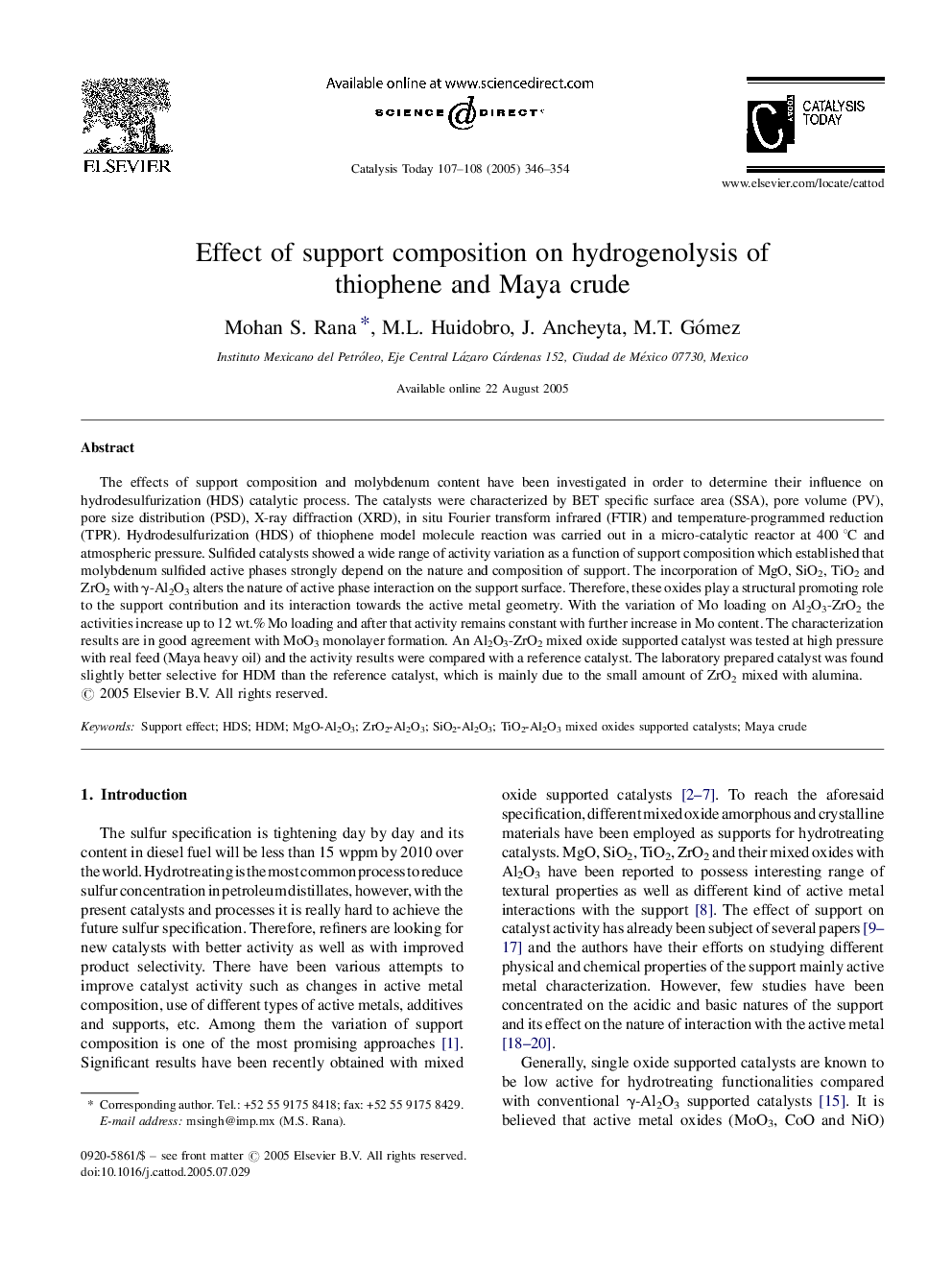| Article ID | Journal | Published Year | Pages | File Type |
|---|---|---|---|---|
| 9610205 | Catalysis Today | 2005 | 9 Pages |
Abstract
The effects of support composition and molybdenum content have been investigated in order to determine their influence on hydrodesulfurization (HDS) catalytic process. The catalysts were characterized by BET specific surface area (SSA), pore volume (PV), pore size distribution (PSD), X-ray diffraction (XRD), in situ Fourier transform infrared (FTIR) and temperature-programmed reduction (TPR). Hydrodesulfurization (HDS) of thiophene model molecule reaction was carried out in a micro-catalytic reactor at 400 °C and atmospheric pressure. Sulfided catalysts showed a wide range of activity variation as a function of support composition which established that molybdenum sulfided active phases strongly depend on the nature and composition of support. The incorporation of MgO, SiO2, TiO2 and ZrO2 with γ-Al2O3 alters the nature of active phase interaction on the support surface. Therefore, these oxides play a structural promoting role to the support contribution and its interaction towards the active metal geometry. With the variation of Mo loading on Al2O3-ZrO2 the activities increase up to 12 wt.% Mo loading and after that activity remains constant with further increase in Mo content. The characterization results are in good agreement with MoO3 monolayer formation. An Al2O3-ZrO2 mixed oxide supported catalyst was tested at high pressure with real feed (Maya heavy oil) and the activity results were compared with a reference catalyst. The laboratory prepared catalyst was found slightly better selective for HDM than the reference catalyst, which is mainly due to the small amount of ZrO2 mixed with alumina.
Related Topics
Physical Sciences and Engineering
Chemical Engineering
Catalysis
Authors
Mohan S. Rana, M.L. Huidobro, J. Ancheyta, M.T. Gómez,
